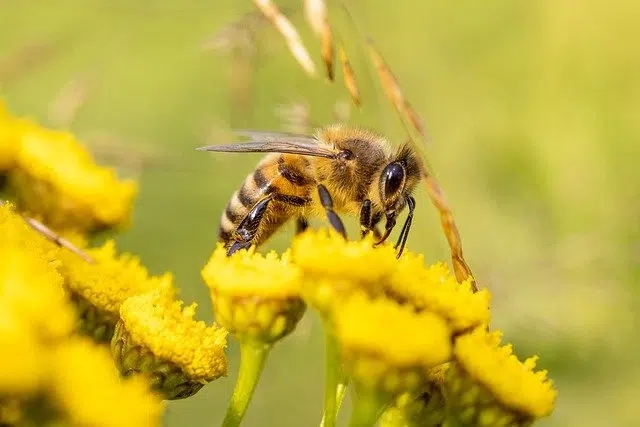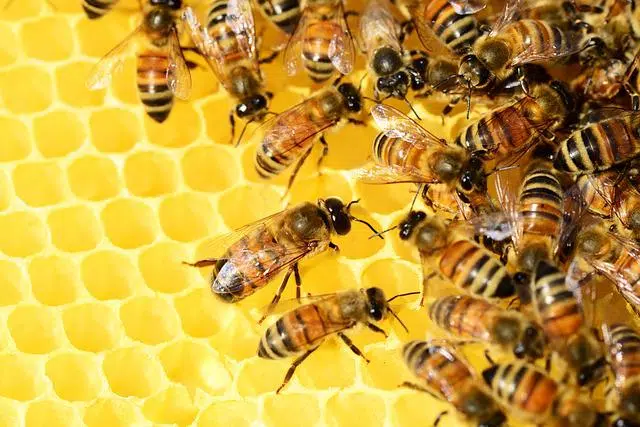
Bees are insects that produce honey and wax.
Bees are insects that measure around fifteen millimeters long and form colonies composed of a single fertilized female (queen), several sterile females (workers) and a large number of males (drones). Typically, these tiny creatures live in the hollows of trees or in human -developed hives .
Bees, producers of both wax and honey , constitute the Anthophil group, of the family known as Apoidea . There are, according to experts, nearly 20 thousand identified species of bees, which are located on all continents, except Antarctica , and feed on pollen and nectar .
They have a pollinating nature, since they are responsible for transferring pollen from the male organ of the flowers (known as the anther) to the female organ (that is, the stigma), which makes it possible for the fusion of the male gamete with the female of the ovum. It should be noted that the first pollinators of flowers were not bees, although over the years they have become the most efficient, but beetles and flies.
Breeding and reproduction of bees
Bees are bred by humans to obtain honey, a sweet substance that they produce from the nectar they collect from flowers, plant fluids or the excretions of other insects . Bees capture these elements, mix them with an enzyme present in their saliva called invertase and preserve them inside the honeycombs. There they reach maturity and are transformed into honey, whose extraction is carried out through the technique known as beekeeping .
The reproduction of these animals takes place through eggs, which are deposited in compartments called alveoli. From the eggs that are fertilized, female bees will be born that will later become workers; From those that are not fertilized, males emerge. The larvae that will become the queens of the hive, on the other hand, are fed royal jelly; the rest eat porridge made with pollen and honey.

Bees create honeycombs to deposit honey.
Workers, drones and queens
The workers live about 45 days and are in charge of carrying out all the tasks involved in organizing the hive . According to the length of life, their responsibilities change. In the first four days, its job is to clean the hive and the alveoli. Then, until day 11, her job is to be a nurse and feed the royal larvae. The next three days it must store the pollen and nectar and ventilate and maintain the humidity and temperature in the hive by flapping its wings. Then, until the 17th, as their wax-producing glands have developed, their job is to build the combs. From the 18th to the 21st he is a sentinel and must guard the entrance to the hive. The rest of the days it is responsible for collecting pollen and nectar, and bringing food to the rest of the colony .
The drones are no more than 100 (compared to 70,000 that the workers can be), they are round, fat and hairy. They are not able to feed themselves, so the workers are in charge of feeding them; They also lack a stinger so they do not even serve to protect the hive . Their only job is to impregnate the queen, and some don't succeed. Furthermore, once they have done so, the queen disembowels them; Those who manage to leave the hive alive inevitably perish. If they try to return, they are thrown out by the guards as they are considered useless mouths to feed .
Per litter, there are several larvae that could become queens ; However, only one will achieve it. The first real bee that is born has the mission of killing the rest; In other words, eliminate the competition. In the event that two queen bees are born at the same time, a fight to the death will begin. After six days, the victorious one will undertake a single nuptial flight, in which it will be fertilized by around ten drones and then return to the hive. From that moment on, its task will be to lay eggs throughout its life, which lasts between 4 and 5 years. It should be noted that the queen is the only bee that has reproductive capacity . In addition, it is responsible for secreting a chemical substance called pheromone, which, when licked by the rest of the bees, transmits the necessary information to know how the work of the hive should be organized.
